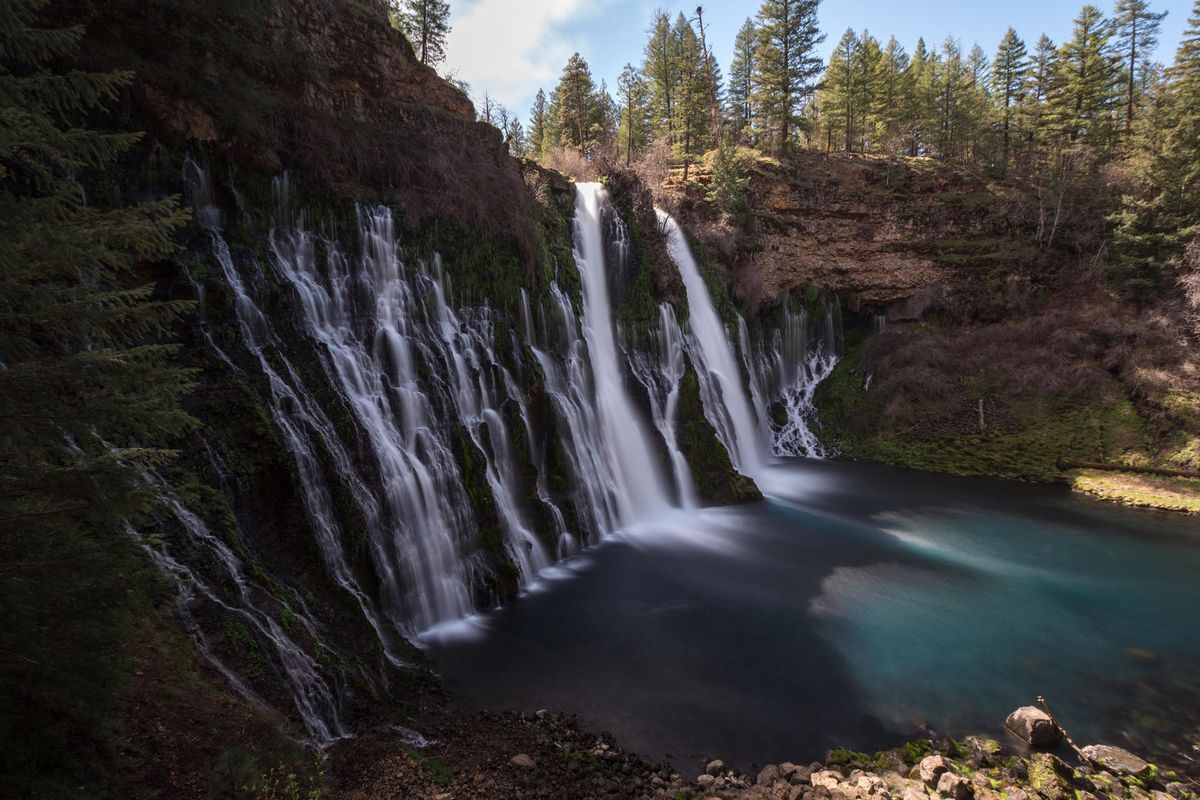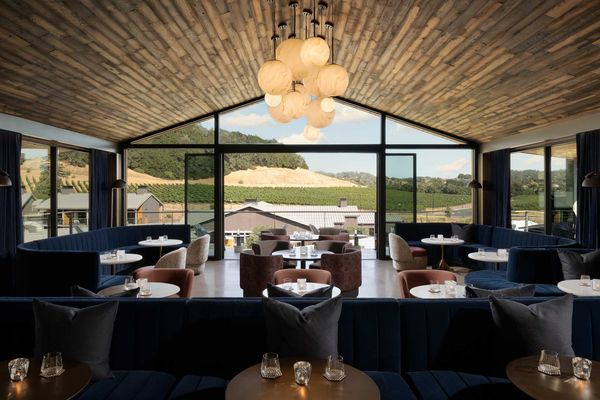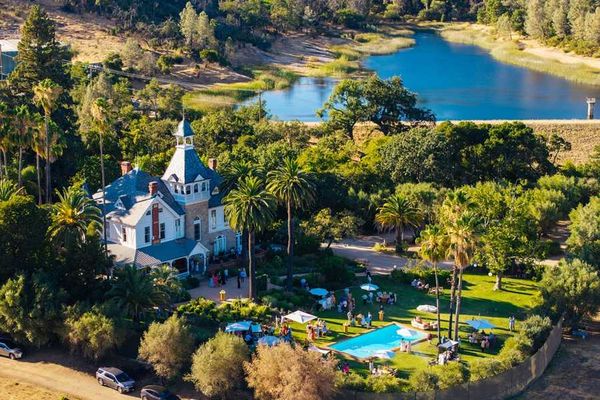It's no secret that California is home to some incredible outdoor destinations. From the serrated ridge lines of the High Sierra to the gargantuan ancient coast redwoods of the North Coast, the Golden State is diverse, alluring, and awe-inspiring.
With so much terrain to cover, the question then becomes where to focus your time? We've culled together 30 must-do California outdoor adventures and destinations. From easily accessible yet strikingly scenic waterfalls and state parks to multi-day backpacking excursions and demanding climbing routes, there's something in here for everyone.
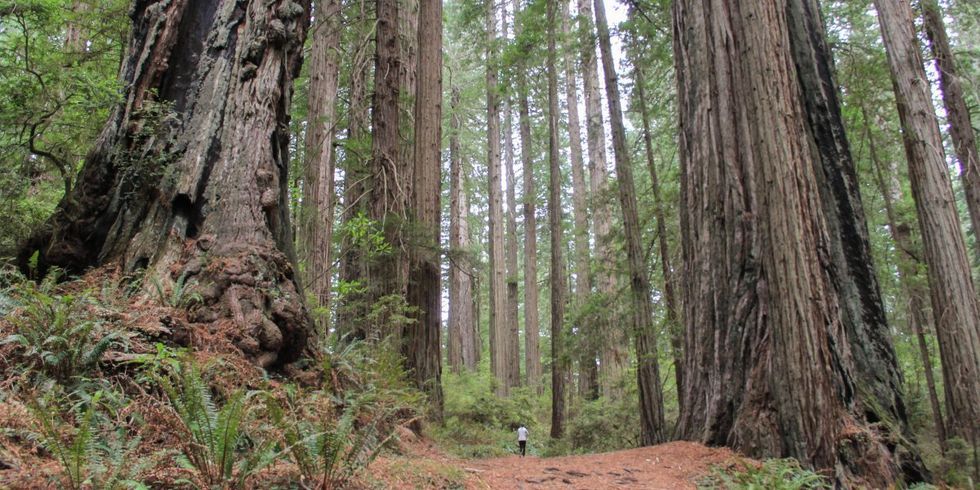
Redwood National and State Parks
Few places in the world command the awe of a redwood grove in Redwood National and State Parks. The collective of Redwood National Park and Prairie Creek Redwoods, Del Norte Coast Redwoods and Jedediah Smith Redwoods State Parks along northern California's Pacific coast is home to some of the finest forest scenery in the world. Delving into this international biosphere reserve is a must for anyone who appreciates forest beauty. Read more.
- PROS: Largest aggregation of old growth coast redwoods in world. Tallest living organism.
- CONS: None
- REGION: Redwoods + Del Norte Coast, CA
- CONGESTION: Moderate
- PREFERABLE SEASON(S): Winter, Spring, Summer, Fall
- DAY-USE/PARKING PASS REQUIRED: State Park Fee ($8.00)
- DOGS ALLOWED: Yes, with restrictions
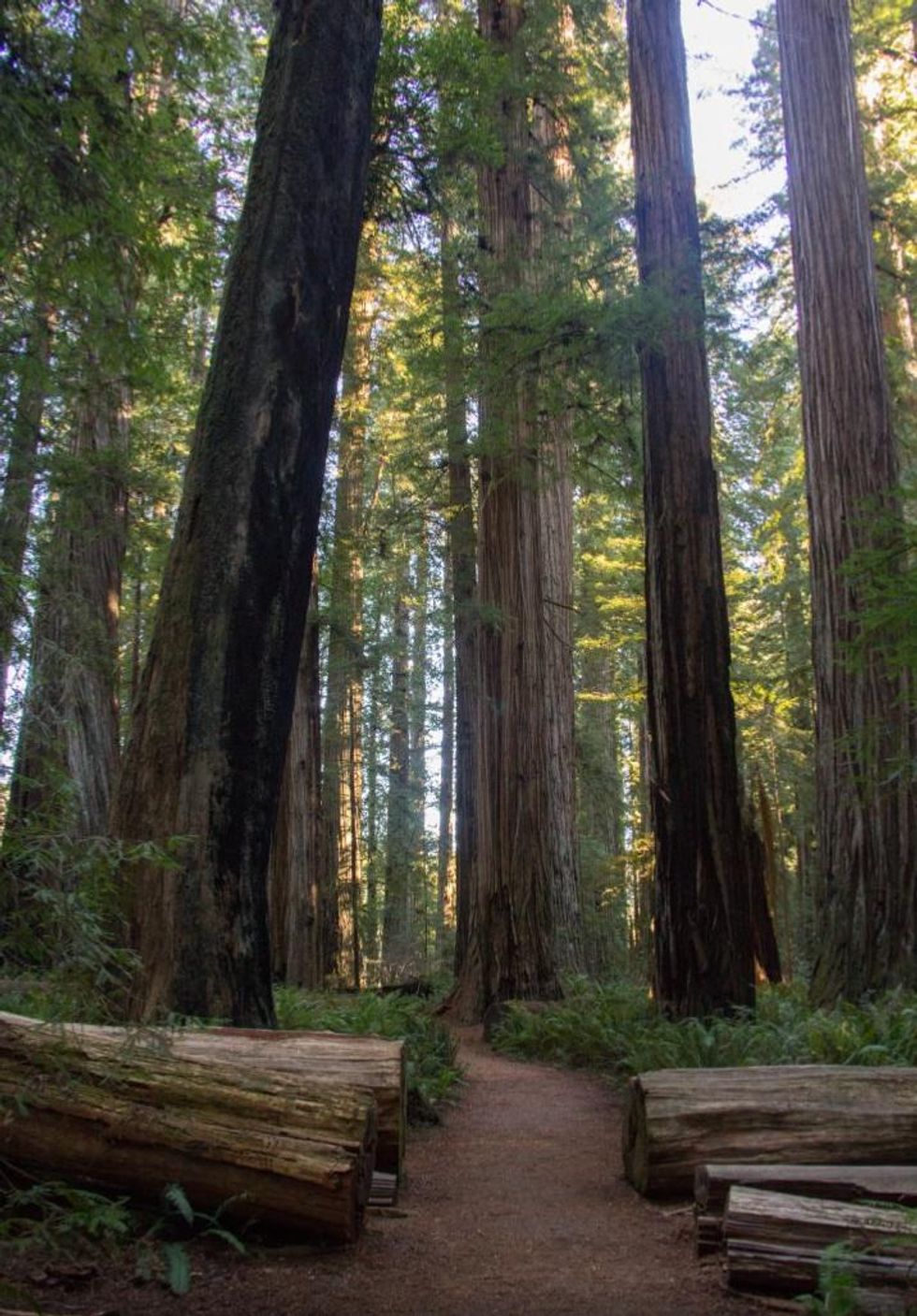
Stout Memorial Grove
Tucked away from the drive-through limelight of Highway 199, Stout Memorial Grove is out of sight and out of mind for many, if not most, redwood-bound visitors. Those who do make the side trip down Howland Hill Road to see Stout Grove's magnificent coast redwoods are well rewarded. Stout Grove is arguably the most scenic of the coast redwood groves in Jedidiah Smith Redwood State Park, and the location on the other side of the Smith River from the highway keeps the visitor count down. Read more.
- PROS: Cathedral-like redwood grove. Few people.
- CONS: Tougher to find than other nearby groves.
- REGION: Redwoods + Del Norte Coast, CA
- CONGESTION: Low
- PREFERABLE SEASON(S): Winter, Spring, Summer, Fall
- DAY-USE/PARKING PASS REQUIRED: Not Required
- DOGS ALLOWED: No
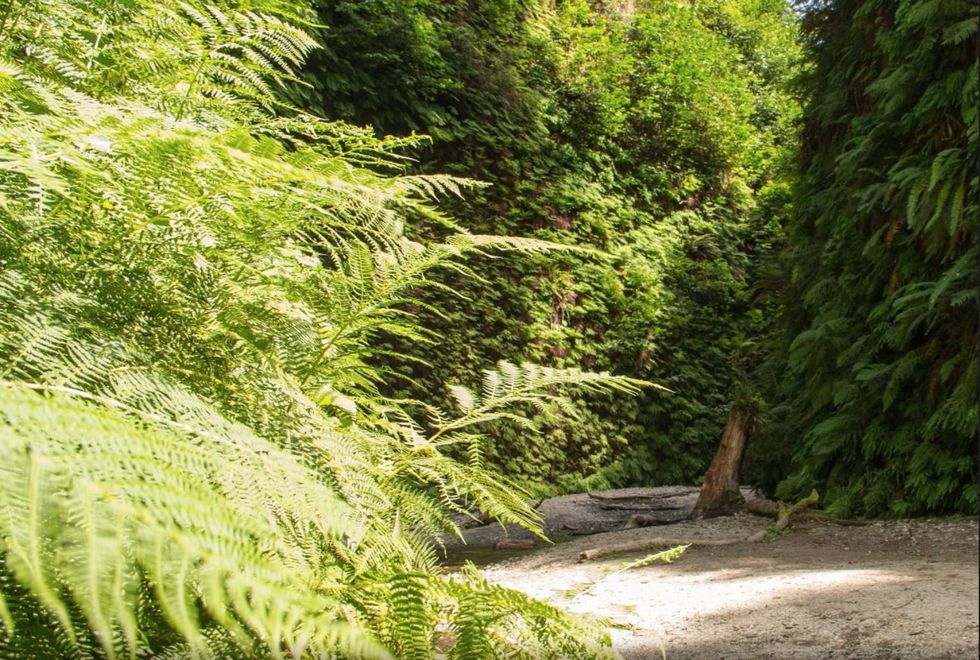
Fern Canyon
Fern Canyon is one of the West Coast's most exquisite natural hallways, where a blanket of brilliant ferns and moss provide the art. Carved over millennia by Home Creek eroding through the coastal bluffs, Fern Canyon provides a portal into an ancient canyon habitat, with some of the inhabitant fern species dating back hundreds of millions of years. Read more.
- PROS: Easily navigable fern-lined slot canyon. Family-friendly.
- CONS: Long unpaved access road.
- REGION: Humboldt, CA
- CONGESTION: High
- PREFERABLE SEASON(S): Winter, Spring, Summer, Fall
- DAY-USE/PARKING PASS REQUIRED: State Park Fee ($8.00)
- DOGS ALLOWED: No
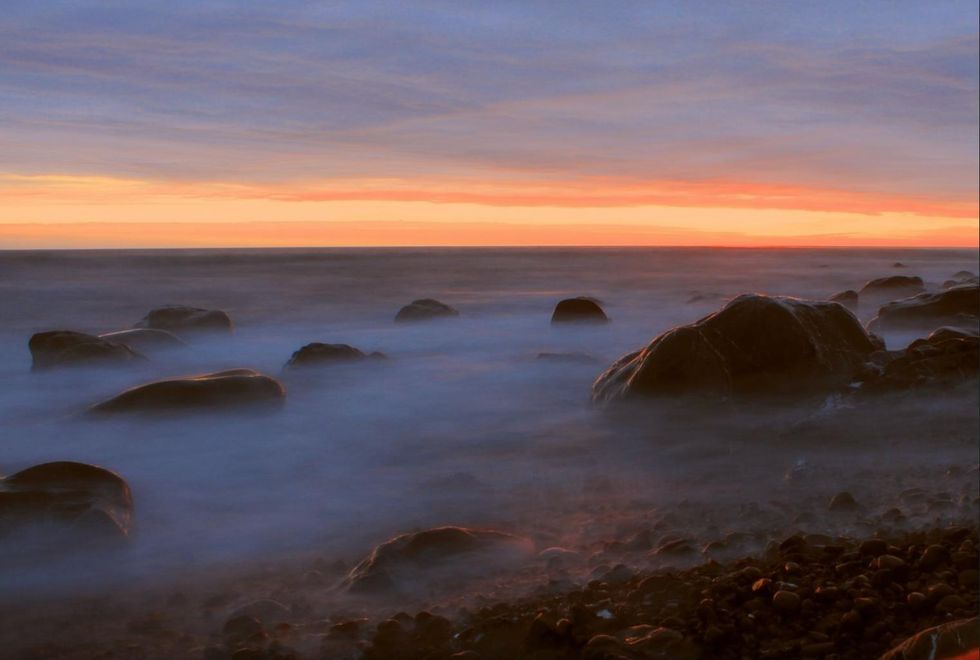
The Lost Coast Trail
The Lost Coast Trail is a wild and unique backpacking adventure along one of the most rugged sections of the Northern California Coast. The trail provides incredible views, a variety of wildlife and flora, and a glimpse of some rarely seen California coastal terrain. Keep in mind that portions of this trip take a great deal of effort; the majority of the 25-mile, 3-day trip takes place on sandy beaches, which can be exhausting for legs and feet. Read more.
- PROS: Beautiful landscape. Only backpackers. Wildflowers. Plenty of water.
- CONS: Long shuttle ride. Hard on legs and feet. Many river crossings.
- REGION: Humboldt, CA
- CONGESTION: Low
- PREFERABLE SEASON(S): Spring, Summer, Fall
- DAY-USE/PARKING PASS REQUIRED: Not Required
- TOTAL DISTANCE: 24.60 mi (39.59 km)
- DOGS ALLOWED: Yes
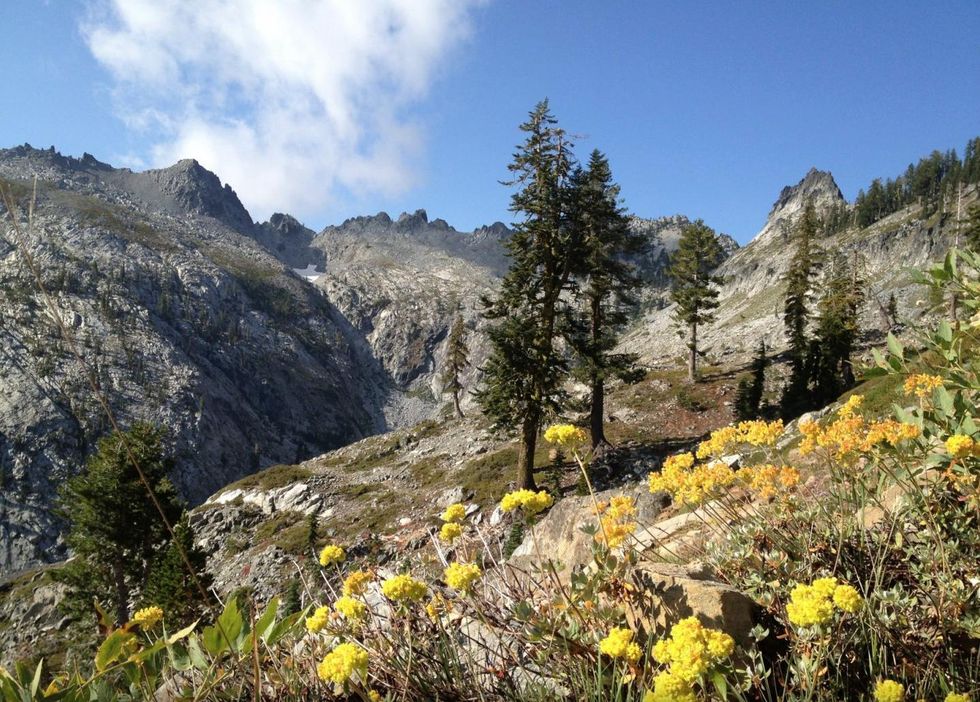
Granite Lake and Seven Up Pass
The bridge that begins the Granite Lake Trail is adjacent to a nice creekside beach that makes for a great rest stop. You will be embedded in impressive old-growth forest for the next 1.5 miles of trail paralleling Granite Creek. Most people on this trail will go no further than Granite Lake, but the 1.5-mile push from Granite Lake to Seven Up Pass is well worth the effort. Summer wildflowers will vie for your attention in the foreground, and the red versus white battle of Seven Up Peak (to your north) and Gibson Peak (to the south) will be the backdrop of your climb. A large percentage of the Trinity Alps will open up before you once you make the pass, and these mountains will try to convince you to keep hiking. Read more.
- PROS: Great views. Wildflowers. Further hiking options.
- CONS: Popular destination.
- REGION: Trinity Alps + Marble Mountain Wilderness, CA
- CONGESTION: Moderate
- PREFERABLE SEASON(S): Summer, Fall
- DAY-USE/PARKING PASS REQUIRED: Not Required
- TOTAL DISTANCE: 13.10 mi (21.08 km)
- DOGS ALLOWED: Yes
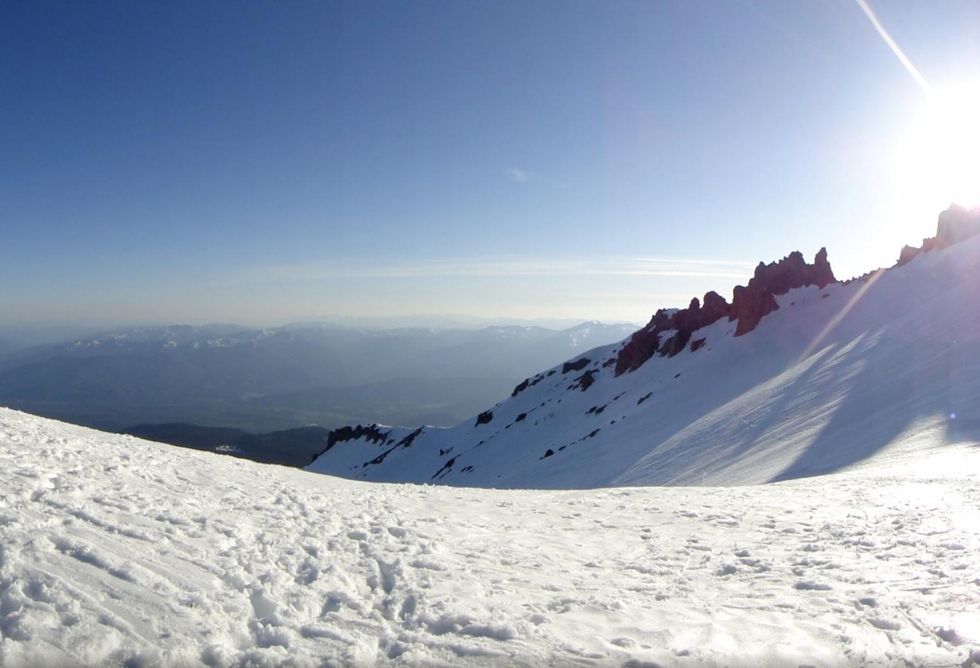
Mount Shasta, Avalanche Gulch
Standing at an impressive 10,000 feet above its base, Mount Shasta offers an approach hike through a red fir forest followed by a steep ascent above tree line to the popular base camp at Helen Lake. The hike presents views of Mount Lassen to the south, the snowcapped California Coast Range to the west, and spectacular views of the volcanic ridges flanking the snow covered Avalanche Gulch. Read more.
- PROS: Clear route. Views of surrounding valleys. Classic alpine climb.
- CONS: Crowded on weekends. Acute mountain sickness. Avalanche hazard. High winds.
- REGION: Mount Shasta + Medicine Lake Area, CA
- CONGESTION: Moderate
- PREFERABLE SEASON(S): Spring, Summer
- DAY-USE/PARKING PASS REQUIRED: Wilderness/Climbing Permit required above 10,000 ft. ($20/3 days or $30 for annual pass)
- TOTAL DISTANCE: 13.60 mi (21.89 km)
- DOGS ALLOWED: No
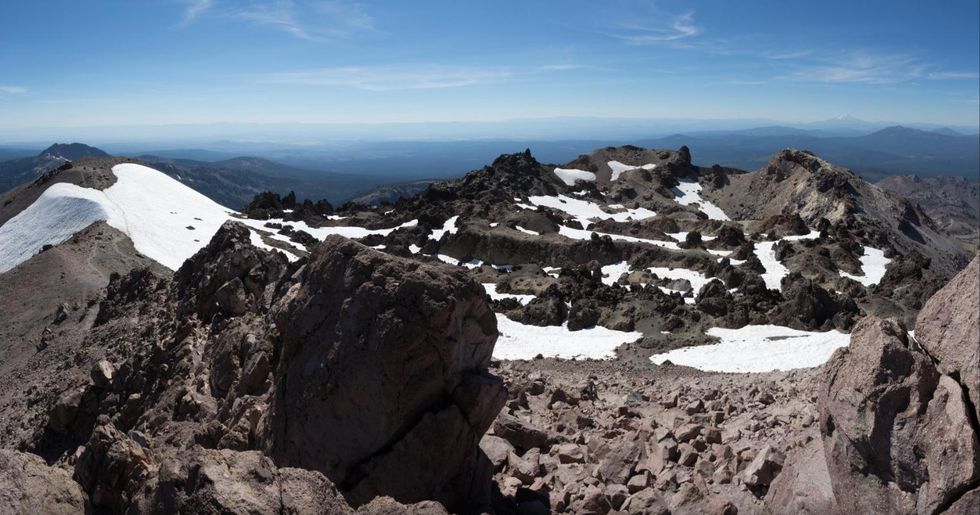
Lassen Peak
Mount Lassen is the world's largest plug dome volcano and the southernmost active volcano in the Cascade Mountain Range. This volcano was formed from redirected lava flow after a larger nearby volcano (known as Mount Tehama) went extinct around 400,000 years ago. A special animal is found on the slopes of Mount Lassen: the American pika (Ochotona princeps) is a small mammal that helps scientists study climate change. Read more.
- PROS: Great views. Active volcano. Mountain summit. Short trail.
- CONS: Strenuous. High elevation. Exposed.
- REGION: Mount Lassen Volcanic Area, CA
- CONGESTION: Moderate
- PREFERABLE SEASON(S): Summer, Fall
- DAY-USE/PARKING PASS REQUIRED: National Park Pass
- DOGS ALLOWED: No
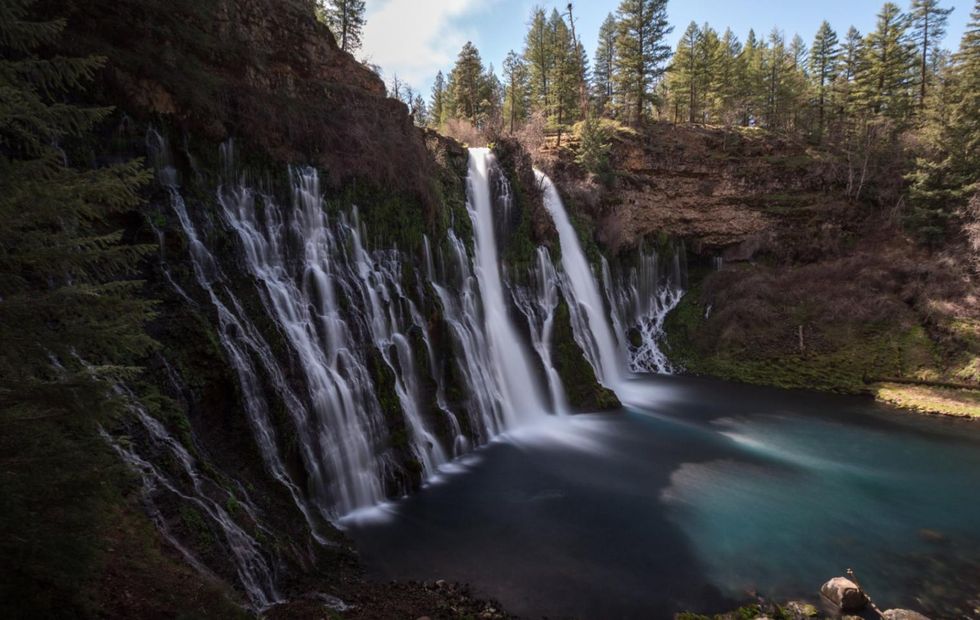
McArthur-Burney Falls Memorial State Park
McArthur-Burney Falls State Park may be a ways off the beaten trail, but that should not sway anyone from visiting. The 129-foot waterfall around which the state park is built is one of the most beautiful waterfalls in California. President Theodore Roosevelt visited here and was so impressed that he declared them the eighth wonder of the world. These falls are fed from an underground spring a quarter mile upstream, so there is never any worry that the falls will run dry. Read more.
- PROS: Gorgeous waterfall with year-round flow. Several picnic areas. Excellent wildlife viewing. New visitor center.
- CONS: Big crowds in summer. Limited hiking trails. Trails can be icy in winter. Far from a major city.
- REGION: Mount Shasta + Medicine Lake Area, CA
- CONGESTION: High
- PREFERABLE SEASON(S): Spring, Summer, Fall
- DAY-USE/PARKING PASS REQUIRED: State Park Fee ($8.00)
- DOGS ALLOWED: Yes, with restrictions
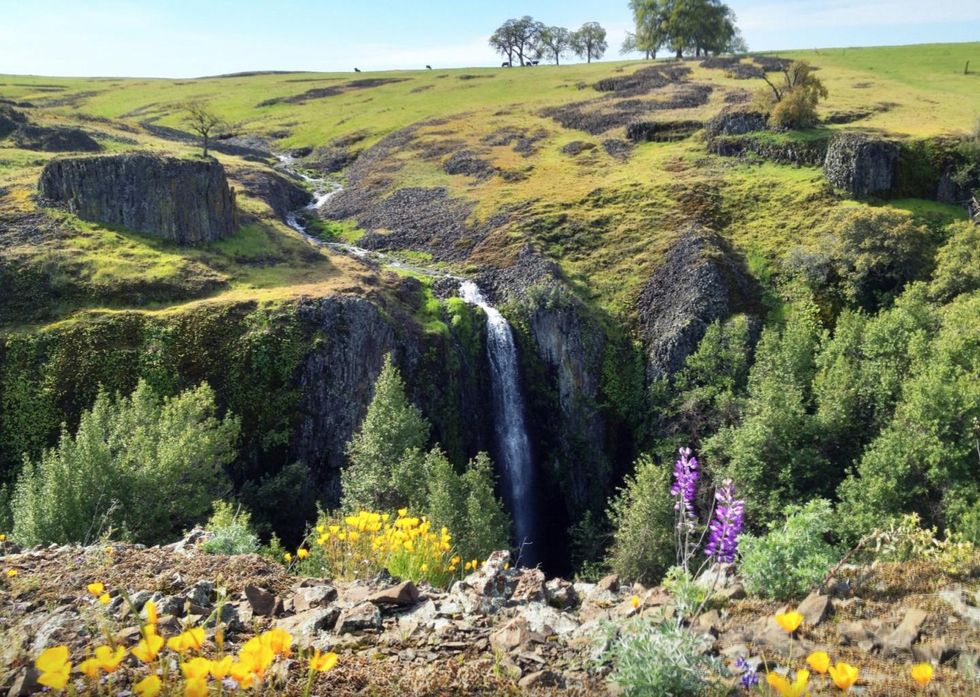
Ravine and Phantom Falls, North Table Mountain Ecological Reserve
A solitary oak greets you at the North Table Mountain Ecological Reserve parking area. As there are currently no established trails, you should note the oak as a landmark while you embark on your cross-country walkabout. There are plenty of nooks and crannies to explore in this reserve, and some of the highlights are the twin cascades of Ravine Falls and Phantom Falls. Read more.
- PROS: Wildflowers. Waterfalls. Room to explore.
- CONS: Short hiking season. Crowds on weekends.
- REGION: Northern Sacramento Valley, CA
- CONGESTION: HighPREFERABLE SEASON(S): Winter, Spring
- DAY-USE/PARKING PASS REQUIRED: Required
- DOGS ALLOWED: Yes
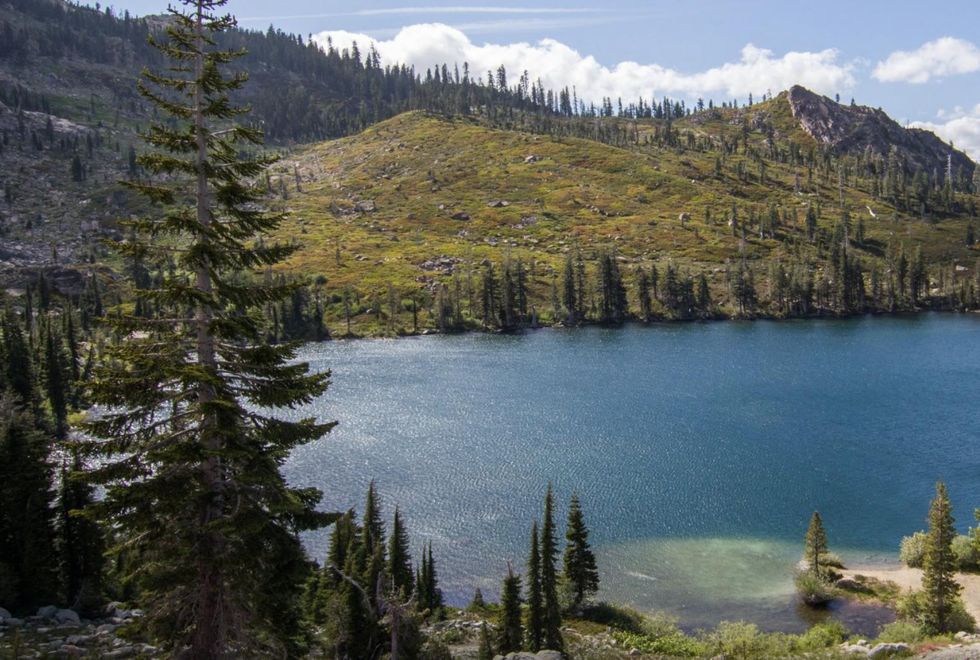
Bear Lakes Loop Via Round Lake
Bear Lakes are in the heart of the Lakes Basin Recreation Area, the northernmost section of the Sierra Nevada. Less visited than Sierra regions to the south, the area is home to spectacular alpine lakes set among a forested and granitic mountain backdrop. Multiple trails weave through the Bear Lakes area forming various loops that provide access to the lakes. Read more.
- PROS: Plenty of serene mountain lakes. Dog friendly.
- CONS: No backcountry camping.
- REGION: Lake Tahoe + Northern Sierra, CA
- CONGESTION: Moderate
- PREFERABLE SEASON(S): Summer, Fall
- DAY-USE/PARKING PASS REQUIRED: Not Required
- DOGS ALLOWED: Yes
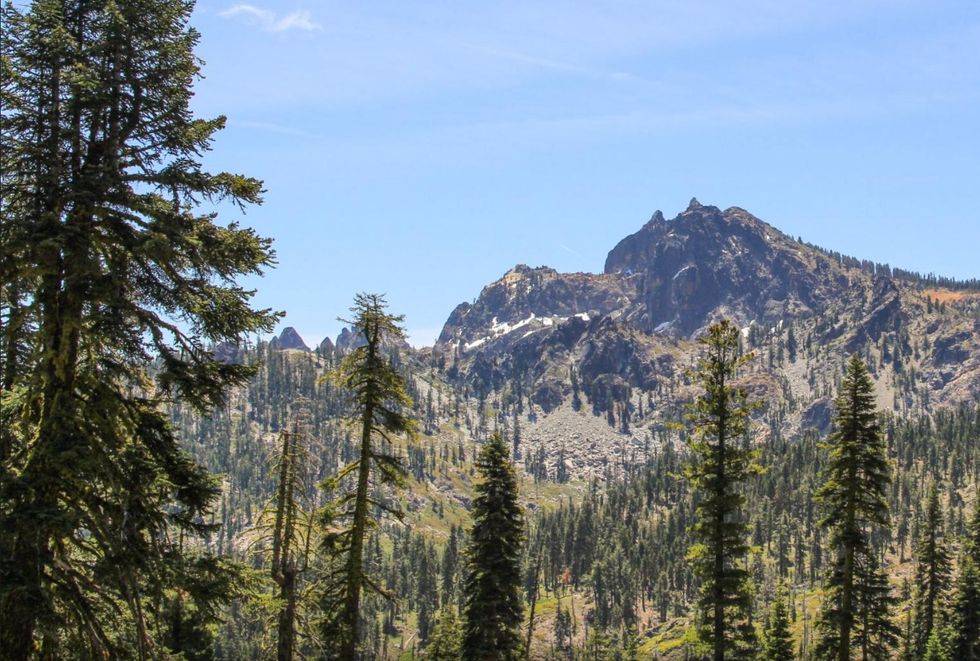
Sierra Buttes Trail
At 8,857 feet in elevation, Sierra Buttes is the tallest peak in the Lakes Basin region, and offers a fantastic day hike excursion. During summer months, open road access allows an approach up from Packer Lake that abbreviates a 2,800-foot climb to a very doable 1,600 feet over 2.5 miles (County Route 621 climbs to Packer Saddle and connects to Butcher Ranch Road, which leads to the Sierra Buttes Trailhead a short distance past the Saddle). Read more.
- PROS: Hiking to the top of the region's highest peak. Fire lookout tower.
- CONS: The height factor may be problematic for some.
- REGION: Lake Tahoe + Northern Sierra, CA
- CONGESTION: Low
- PREFERABLE SEASON(S): Summer, Fall
- DAY-USE/PARKING PASS REQUIRED: Not Required
- DOGS ALLOWED: Yes
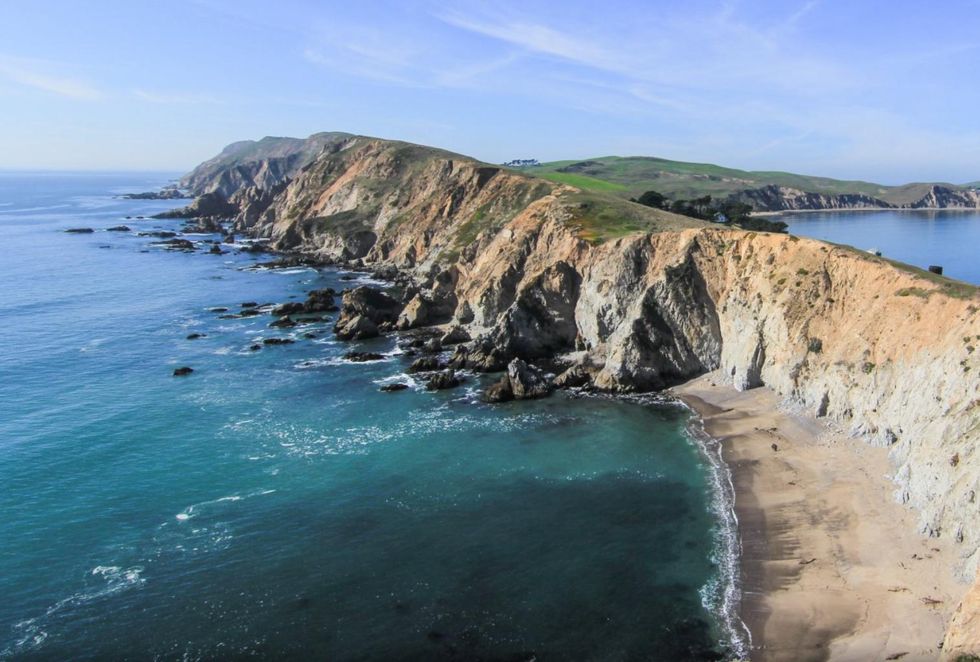
Point Reyes National Seashore
A stunning California coastal territory managed under the National Park Service, Point Reyes National Seashore comprises the majority of land on the Point Reyes Peninsula as well as the surrounding near-shore Pacific waters. A wonderful network of trails exists throughout Point Reyes, and there are excellent trail options for day hiking and backpacking that traverse the coastline, forests, and uplands of the peninnsula. Outstanding day hikes include Chimney Rock, Tomales Point, and the Palomarin-Alamere Falls trail. Read more.
- PROS: Scenic coastal hiking. Abundant wildlife. Historic lighthouse. Expansive beaches.
- CONS: Often foggy and windy.
- REGION: Marin, CA
- CONGESTION: Moderate
- PREFERABLE SEASON(S): Winter, Spring, Fall
- DAY-USE/PARKING PASS REQUIRED: Not Required
- DOGS ALLOWED: No
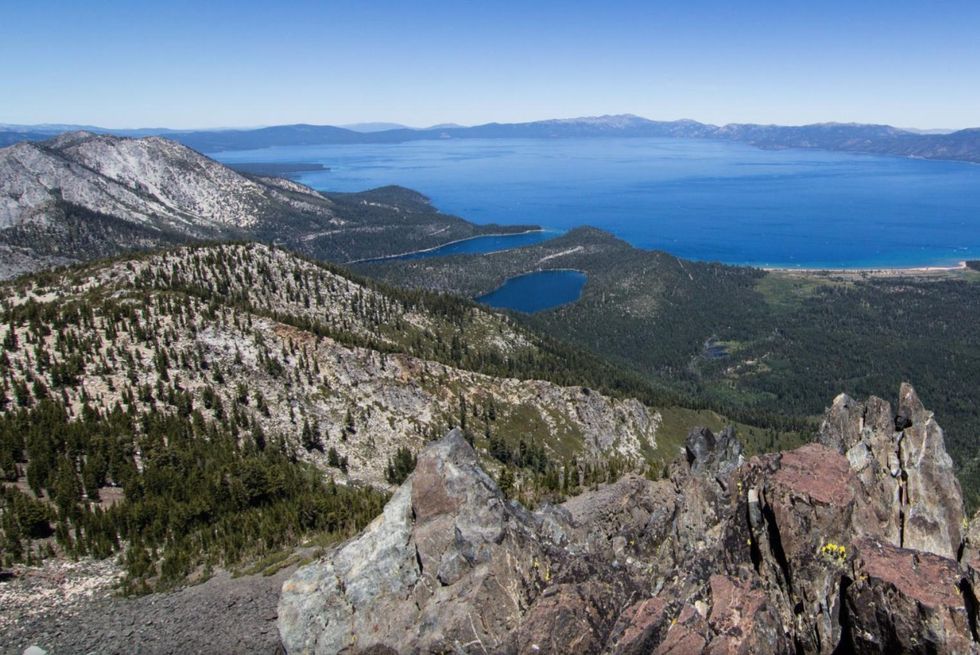
Mount Tallac, Summer Trail
Most who have visited Lake Tahoe have heard of Mount Tallac, or at the very least, have laid their eyes on it. Rising above the southwest shore of the lake, Mount Tallac is part of Desolation Wilderness and the tallest mountain on the lake's immediate shoreline. At 9,738 feet, the mountain stands as a commanding landmark, and it is a continual draw for hikers in the summer and backcountry skiers in the winter. Read more.
- PROS: Hike Lake Tahoe's tallest peak. Fantastic lake views.
- CONS: None.
- REGION: Lake Tahoe + Northern Sierra, CA
- CONGESTION: Moderate
- PREFERABLE SEASON(S): Summer, Fall
- DAY-USE/PARKING PASS REQUIRED: Not Required
- DOGS ALLOWED: Yes
Views south along the Rubicon Trail(Aron Bosworth)
Rubicon Trail
If you have a free day in Tahoe or are just looking for a fantastic summer, hike we highly recommend checking out the Rubicon Trail on Tahoe's southwest shore. Not to be confused with the 22-mile long, four-wheel drive route west of the lake, this lakeside foot trail is 6.5 miles long and connects two of Tahoe's premier state parks, D.L. Bliss and Emerald Bay. Most people set out do the section between Rubicon Point and Vikingsholm (4.6 miles one way), but the full length of the trail extends from Rubicon Point south around Emerald Bay to Eagle Point Campground. Read more.
- PROS: Lakeside trail. Lofty cliff section. Connects two state parks.
- CONS: None.
- REGION: Lake Tahoe + Northern Sierra, CA
- CONGESTION: Moderate
- PREFERABLE SEASON(S): Spring, Summer, Fall
- DAY-USE/PARKING PASS REQUIRED: State Park Fee ($10.00)
- DOGS ALLOWED: No
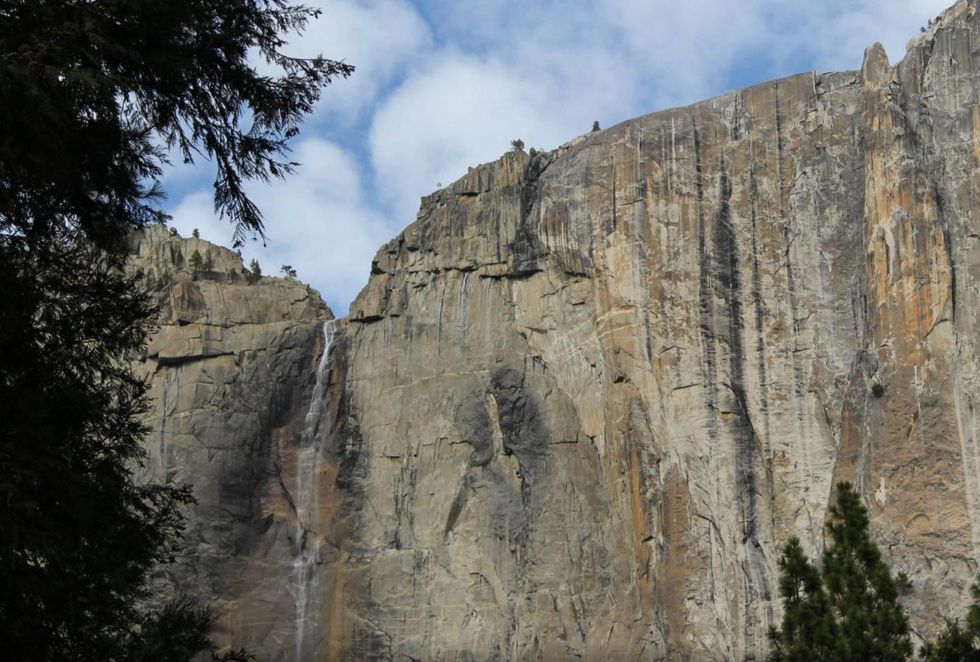
Yosemite Valley Bicycle Loop
Exploring Yosemite Valley by bicycle opens a world of possibilities that aren't afforded by car. In addition to having an endless supply of bike parking (you can pull off just about anywhere), you have the open air freedom to take in the scenery while cruising and can stop on a whim to tour an a magnificent meadow, gaze up at granite monoliths, or warm up in front of a fire at the historic Ahwahnee Hotel. Read more.
- PROS: Great way to sightsee and cover the valley landmarks. Don't have to deal with parking.
- CONS: Bike path network is limited. Must share roads with cars.
- REGION: Yosemite + Central Sierra, CA
- CONGESTION: Moderate
- PREFERABLE SEASON(S): Spring, Summer, Fall
- DAY-USE/PARKING PASS REQUIRED: National Park Pass
- TOTAL DISTANCE: 20.50 mi (32.99 km)
- DOGS ALLOWED: No
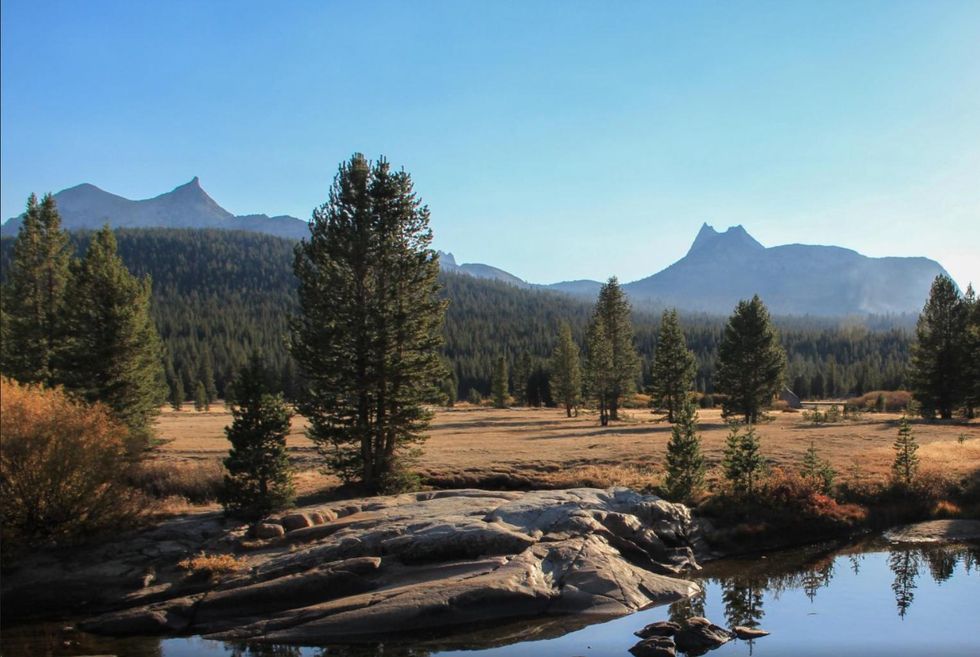
Tuolumne Meadows
Yosemite's high country is an outdoor enthusiast's dreamscape, filled with jagged peaks, granite domes, expansive meadows, and glacially-carved lakes. At the heart of it all lies Tuolumne Meadows, one of the largest meadows in the Sierra Nevada and the main access point for exploring much of Yosemite's higher elevations. Read more.
- PROS: Yosemite high-country scenery. Hiking and climbing access. One of the largest meadows in the Sierra.
- CONS: Accessible by car only seasonally.
- REGION: Yosemite + Central Sierra, CA
- CONGESTION: High
- PREFERABLE SEASON(S): Summer, Fall
- DAY-USE/PARKING PASS REQUIRED: National Park Pass
- DOGS ALLOWED: No
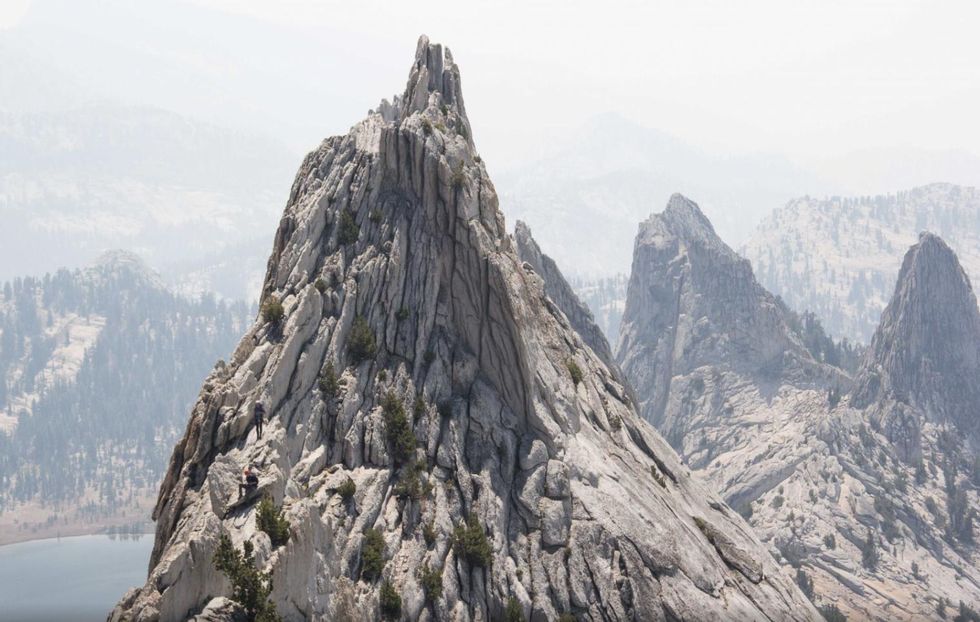
Matthes Crest Traverse
Matthes Crest is a 1-mile, fifth-class ridge traverse in the High Sierra of Yosemite National Park's Tuolumne Meadows. This route is one of a kind, and it features wild movements, breathtaking views, incredible exposure, and excellent rock quality. It's undoubtedly one of the best traverse routes of it's kind in the United States. Read more.
- PROS: Excellent climbing. Incredible location. Unique style of route.
- CONS: May be crowded during summer months.
- REGION: Yosemite + Central Sierra, CA
- CONGESTION: Moderate
- PREFERABLE SEASON(S): Summer
- DAY-USE/PARKING PASS REQUIRED: National Park Pass
- TOTAL DISTANCE: 7.50 mi (12.07 km)
- DOGS ALLOWED: No
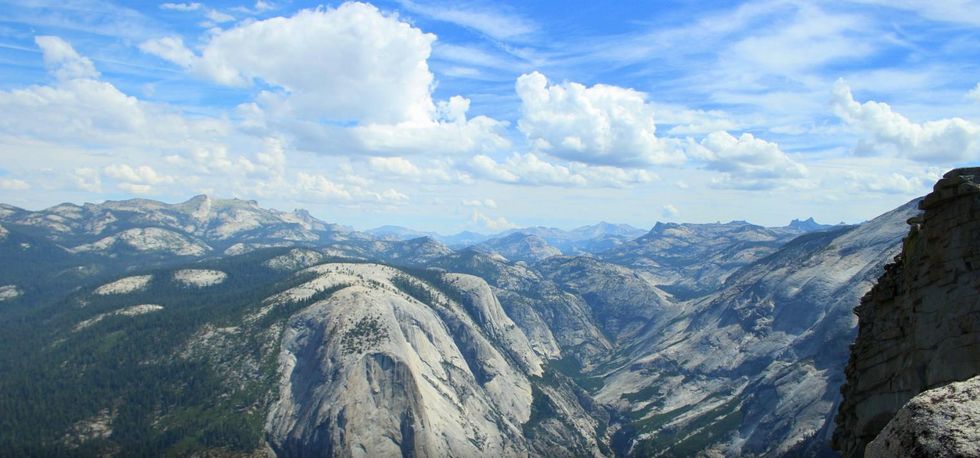
Half Dome Hike via John Muir Trail
The Half Dome Hike in Yosemite National Park is easily among the most iconic and challenging in the United States. This hike will test you physically and mentally as you climb the last quarter-mile of trail and ascend the sheer flank of Half Dome using bolted cables. The hike up this Yosemite icon features incredible mountain and valley views, wildflowers, waterfalls, old-growth sequoias, and fascinating glimpses of some of California's most dynamic geological history. Read more.
- PROS: Great views. Wildflowers. Waterfalls. Giant sequoias.
- CONS: Big crowds. Afternoon lightening storms in summer.
- REGION: Yosemite + Central Sierra, CA
- CONGESTION: High
- PREFERABLE SEASON(S): Summer, Fall
- DAY-USE/PARKING PASS REQUIRED: National Park Pass
- TOTAL DISTANCE: 16.50 mi (26.55 km)
- DOGS ALLOWED: No
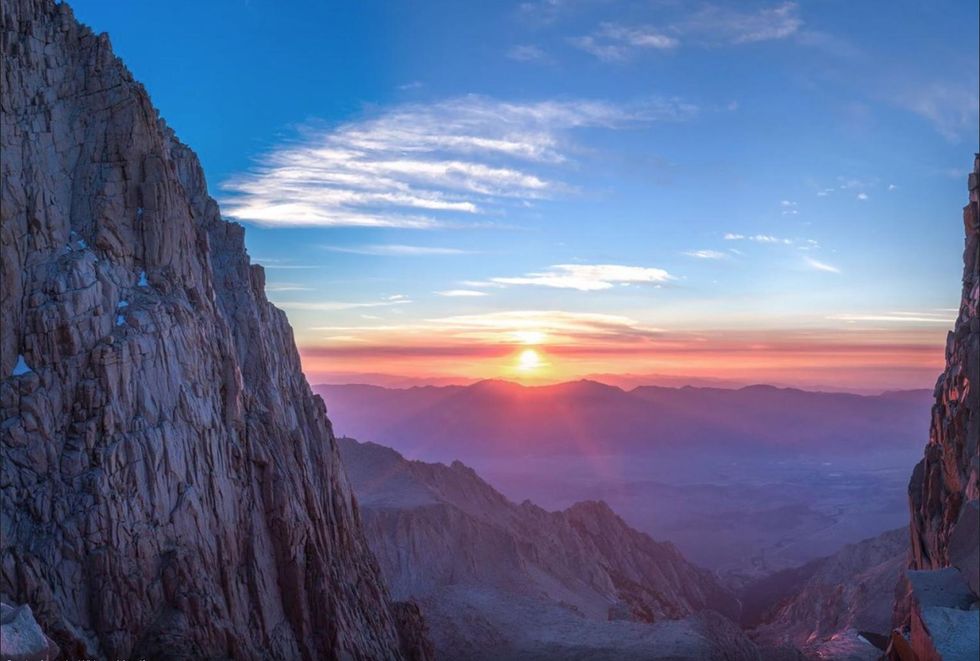
John Muir Trail (JMT) Overview
Anyone hiking a section or the entirety of the JMT will experience firsthand the impact Muir left on these iconic lands, as the trail runs entirely through national park lands and/or designated wilderness. The vast majority of the JMT shares footsteps with one of the most scenic sections of the Pacific Crest Trail, where mile after mile of High Sierra peaks, passes and lakes will leave the hiker awe-struck by the display nature has on offer. Read more.
- PROS: One of the top scenic trails in the country. Trail goes through three national parks. High Sierra scenery.
- CONS: Hard to get permit. Thru-hiking is logistically complex.
- REGION: Yosemite + Central Sierra, CA
- CONGESTION: Moderate
- PREFERABLE SEASON(S): Summer
- DAY-USE/PARKING PASS REQUIRED: Not Required
- TOTAL DISTANCE: 211.00 mi (339.57 km)
- DOGS ALLOWED: No
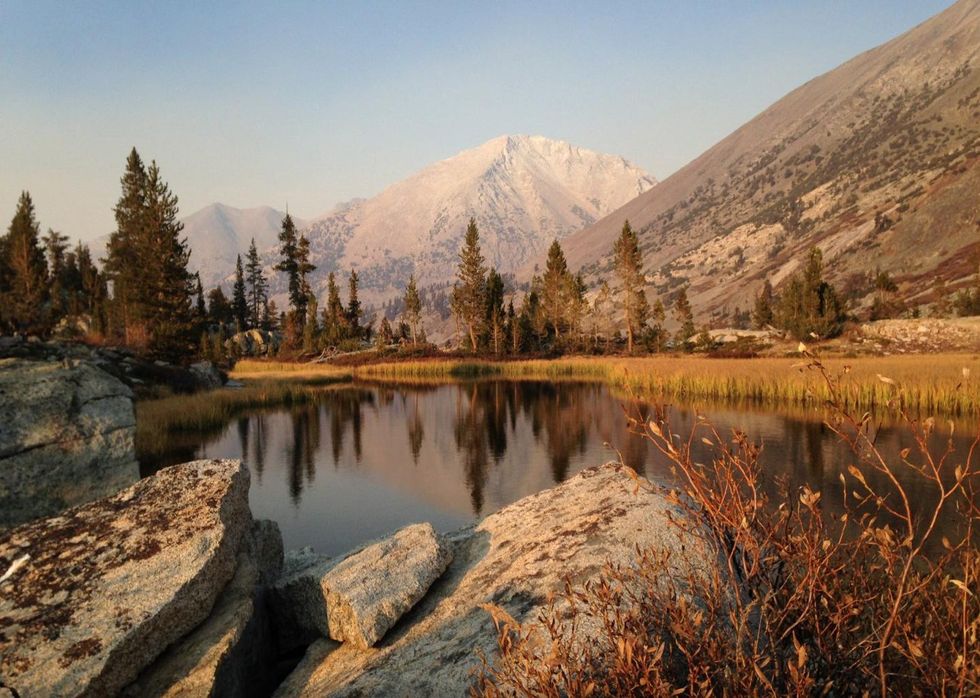
Rae Lakes Loop
Rae Lakes loop is a scenic Sierra multi-day loop and truly a backpacking trip that has it all. Stunning lake basins, rushing waterfalls, and splendidly carved canyons envelop your being for the three to six days necessary to complete the circuit in Kings Canyon National Park. Read more.
- PROS: Beautiful lakes. Great High Sierra scenery. Well maintained trail.
- CONS: Summer crowds. Heavily used campsites.
- REGION: Southern Sierra, CA
- CONGESTION: Moderate
- PREFERABLE SEASON(S): Summer, Fall
- DAY-USE/PARKING PASS REQUIRED: National Park Pass
- TOTAL DISTANCE: 42.00 mi (67.59 km)
- DOGS ALLOWED: No
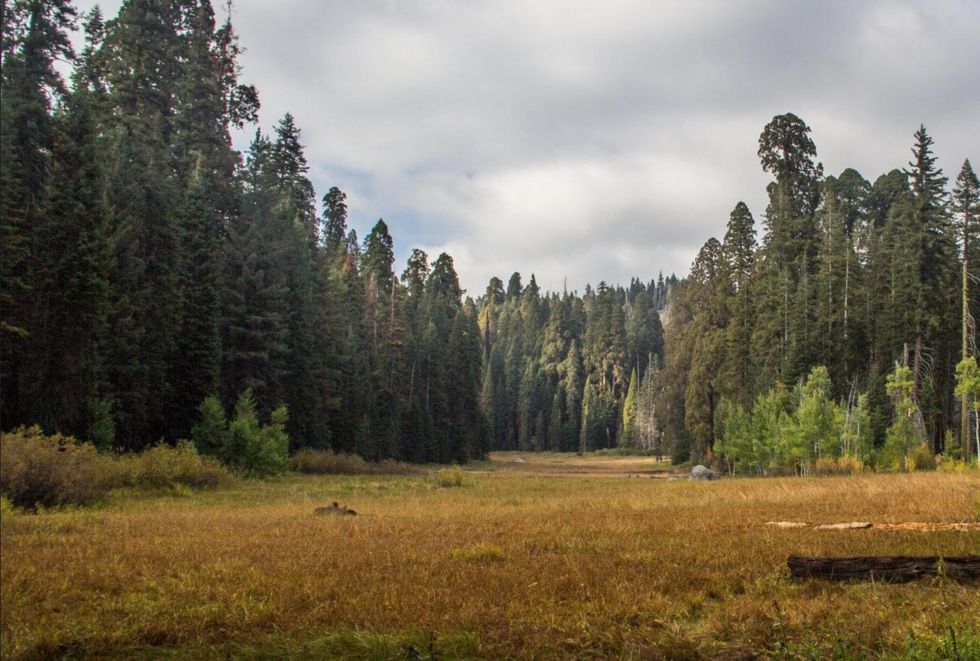
Crescent Meadow
Surrounded by giant sequoias and filled with burgeoning flowers, lush grasses, and ferns in the summer, it's easy to see why John Muir called Crescent Meadow the "Gem of the Sierra." A beautiful 1.5-mile trail encircles the boot-shaped portion of the meadow, and this is a great walk for families looking to extend their exploration of the Giant Forest. Crescent Creek enters the meadow at the south end, and a trail also leads to Log Meadow, which sits just east of Crescent Meadow. Read more.
- PROS: Picturesque meadow backed by massive trees. Start of High Sierra Trail.
- CONS: None.
- REGION: Southern Sierra, CA
- CONGESTION: Moderate
- PREFERABLE SEASON(S): Spring, Summer, Fall
- DAY-USE/PARKING PASS REQUIRED: National Park Pass
- DOGS ALLOWED: No
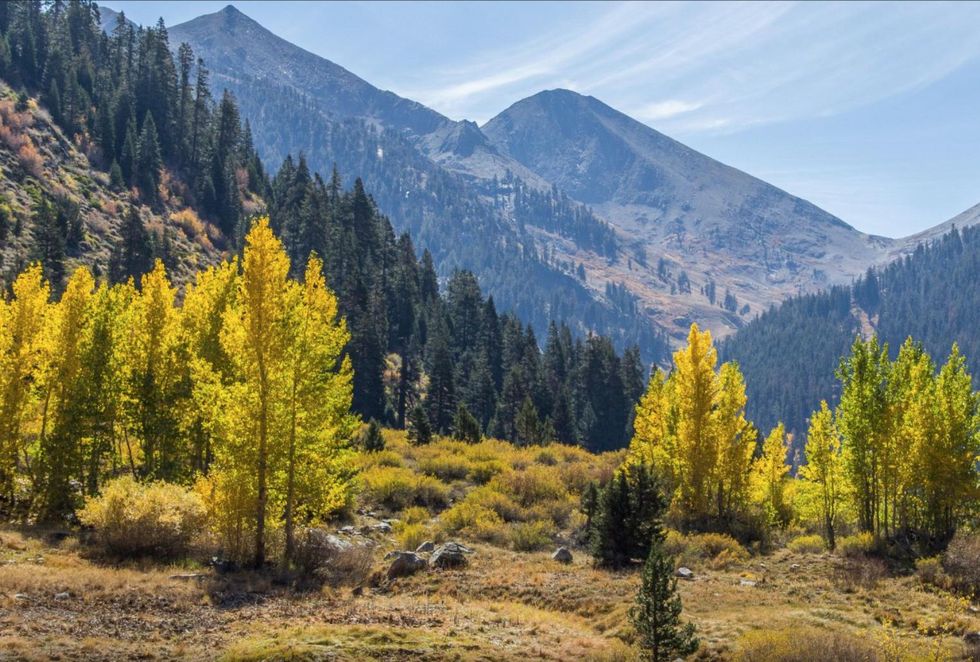
Mineral King Valley
The access point to a handful of trailheads leading up to the lakes, passes, and peaks of the surrounding high country, Mineral King is a popular recreation area for hikers and backpackers exploring the southern portions of the park from late spring to early fall. Mineral King offers a spectacular, verdant explosion in spring and early summer and a brilliant foliage display in fall led by the quaking aspen inhabitants. Read more.
- PROS: Access to southern Sequoia National Park. Numerous hiking trails. Fall Colors.
- CONS: Seasonal access.
- REGION: Southern Sierra, CA
- CONGESTION: Moderate
- PREFERABLE SEASON(S): Summer, Fall
- DAY-USE/PARKING PASS REQUIRED: National Park Pass
- DOGS ALLOWED: Yes
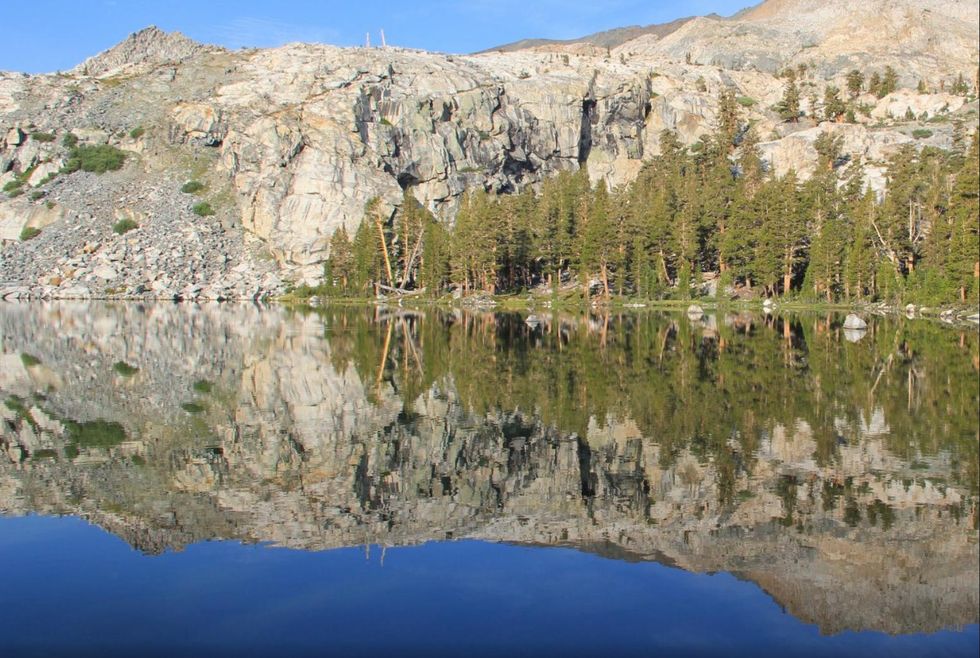
Glacier Pass, Sawtooth Pass and Big Five Lakes Hiking Loop
There are several day and multi-day backcountry hiking loop options available from the Mineral King Valley. Hiking the Glacier Pass to Sawtooth Pass Loop via Big Five Lakes qualifies at the top of this list. If you are interested in a loop that is approximately 27 miles long and blends cross-country route finding and on-trail travel, stunning alpine landscape, and high Sierra lake fishing, this hike is for you. Read more.
- PROS: Quick access to the high Sierra. Good Fishing. Nice mix of trail and cross-country travel.
- CONS: Rough access road. Marmot issues at trailhead in late spring and early summer.
- REGION: Southern Sierra, CA
- CONGESTION: Low
- PREFERABLE SEASON(S): Summer
- DAY-USE/PARKING PASS REQUIRED: National Park Pass
- TOTAL DISTANCE: 27.00 mi (43.45 km)
- DOGS ALLOWED: No
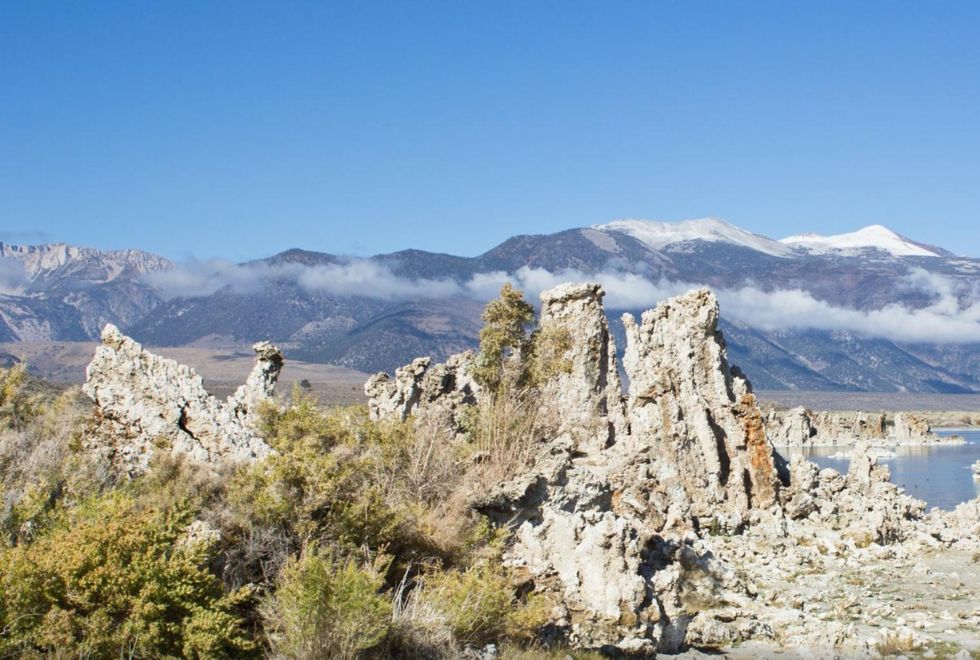
Mono Basin National Scenic Area
Mono Basin National Scenic Area encompasses the salty waters of Mono Lake and unique geological features that include tufa towers and the Mono Craters. Paoha and Negit Islands, along with Mono Lake itself, are home to over a million migrating birds that feed on alkali flies and brine shrimp. Read more.
- PROS: Diversity of activities. Photogenic. Educational.
- CONS: Some areas are very crowded. Winter road closures.
- REGION: Eastern Sierra + White Mountains Area, CA
- CONGESTION: High
- PREFERABLE SEASON(S): Winter, Spring, Summer, Fall
- DAY-USE/PARKING PASS REQUIRED: General Day Use Fee ($3.00)
- DOGS ALLOWED: Yes
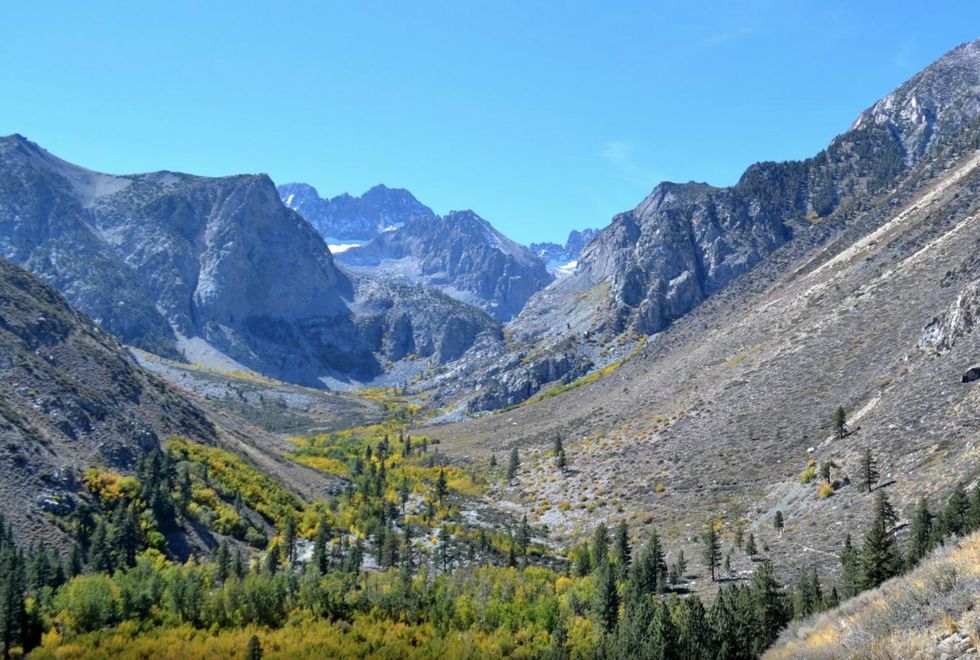
Big Pine Creek North Fork Hiking Trail, First and Second Lake
The Big Pine Creek North Fork Hiking Trail rises into California's High Sierra toward the southernmost glaciers in the United States. Palisade glacier sits above a series of lakes, named First Lake through Seventh Lake, where you'll find some of the best trout fishing in the Sierra Nevada. Read more.
- PROS: Access to Palisades Range and High Sierra.
- CONS: Trailhead access closed in winter.
- REGION: Eastern Sierra + White Mountains Area, CA
- CONGESTION: Low
- PREFERABLE SEASON(S): Spring, Summer, Fall
- DAY-USE/PARKING PASS REQUIRED: Not Required
- DOGS ALLOWED: Yes
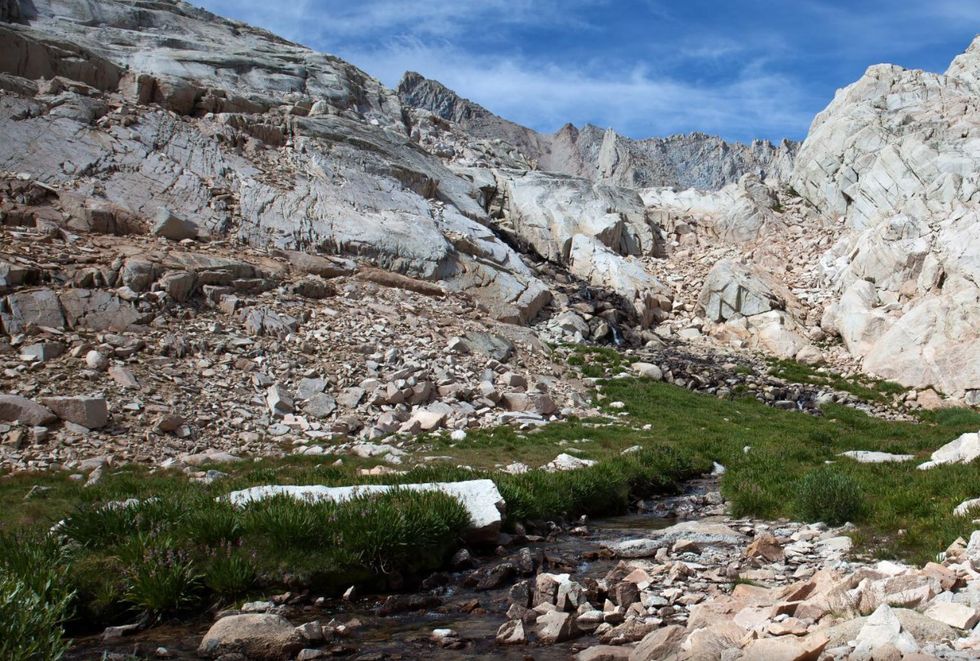
Mount Whitney Hike Via Whitney Portal
The 22-mile round-trip Mount Whitney Trail is often a hiker's first experience with high-altitudes, which is certainly a factor to consider when planning the pace of an ascent. Strong and experienced hikers can complete the Mount Whitney Trail in one long day, but for most, a two-day approach provides much needed time for rest and acclimatization. Many hikers on this two-day schedule will camp at Trail Camp, which sits at 12,039 feet and a little over 6 miles from the trailhead. Read more.
- PROS: Amazing views. Wildflowers. Alpine lakes.
- CONS: Crowded. Permits are difficlut to obtain. Bear and marmot country.
- REGION: Eastern Sierra + White Mountains Area, CA
- CONGESTION: High
- PREFERABLE SEASON(S): Spring, Summer, Fall
- DAY-USE/PARKING PASS REQUIRED: Not Required
- TOTAL DISTANCE: 22.00 mi (35.41 km)
- DOGS ALLOWED: No
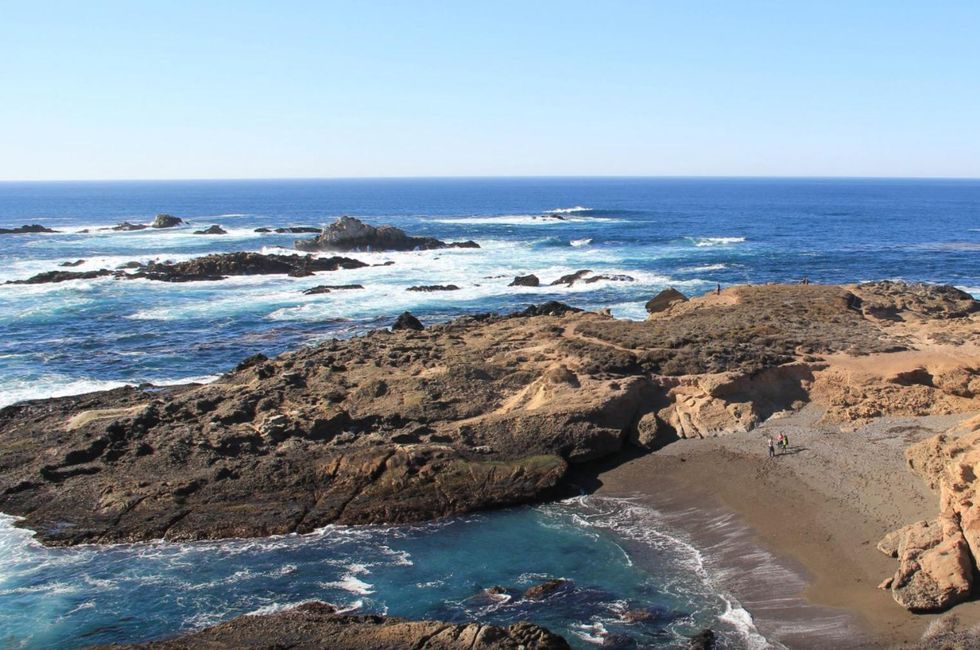
Point Lobos State Natural Reserve
For the nature lover, Point Lobos State Natural Reserve is nothing short of spectacular. Hidden from Highway 1, this cove-laden coastline situated between Carmel and Big Sur teems with wildlife that is attracted to the nutrient-rich waters prevalent around Monterey Bay. A network of trails makes exploring the reserve both easy and accessible. Read more.
- PROS: Diversity of marine life. Scenic coves.
- CONS: None.
- REGION: Big Sur Coastline, CA
- CONGESTION: High
- PREFERABLE SEASON(S): Winter, Spring, Summer, Fall
- DAY-USE/PARKING PASS REQUIRED: State Park Fee ($10.00)
- DOGS ALLOWED: No
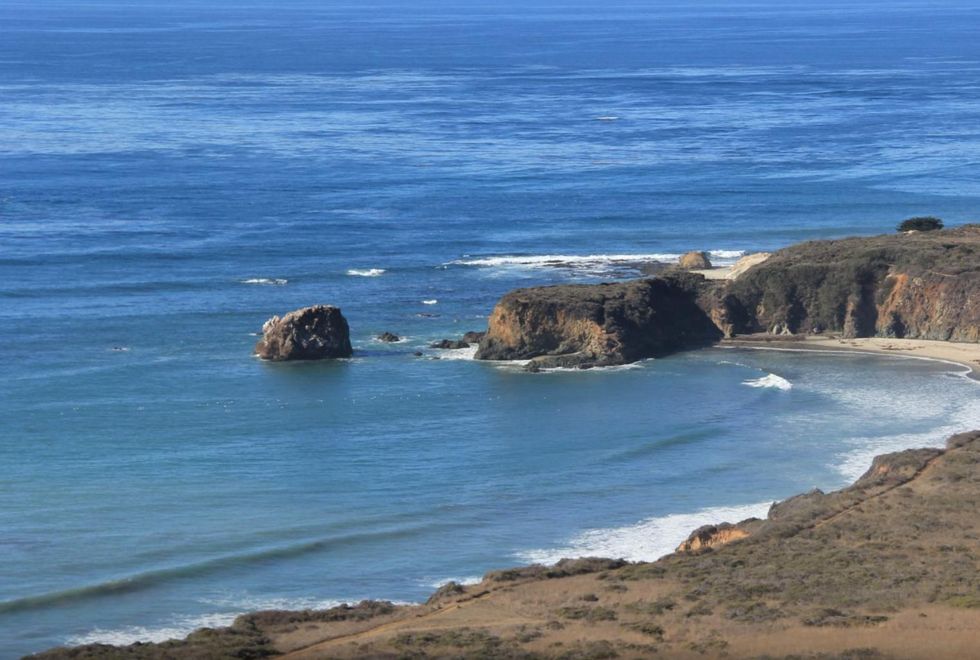
Andrew Molera State Park
Located on the northern stretch of the Big Sur coast, Andrew Molera State Park is the largest of the state parks within the magnificent Big Sur area. With over 20 miles of hiking trails, a scenic and accessible beach, an abundance of wildlife, and the Big Sur River, the park offers something for just about everyone. Read more.
- PROS: Wildlife. Scenic beach. Diversity of hiking trails. Surf.
- CONS: Can get crowded on weekends and holidays.
- REGION: Big Sur Coastline, CA
- CONGESTION: High
- PREFERABLE SEASON(S): Winter, Spring, Summer, Fall
- DAY-USE/PARKING PASS REQUIRED: State Park Fee ($10.00)
- DOGS ALLOWED: No
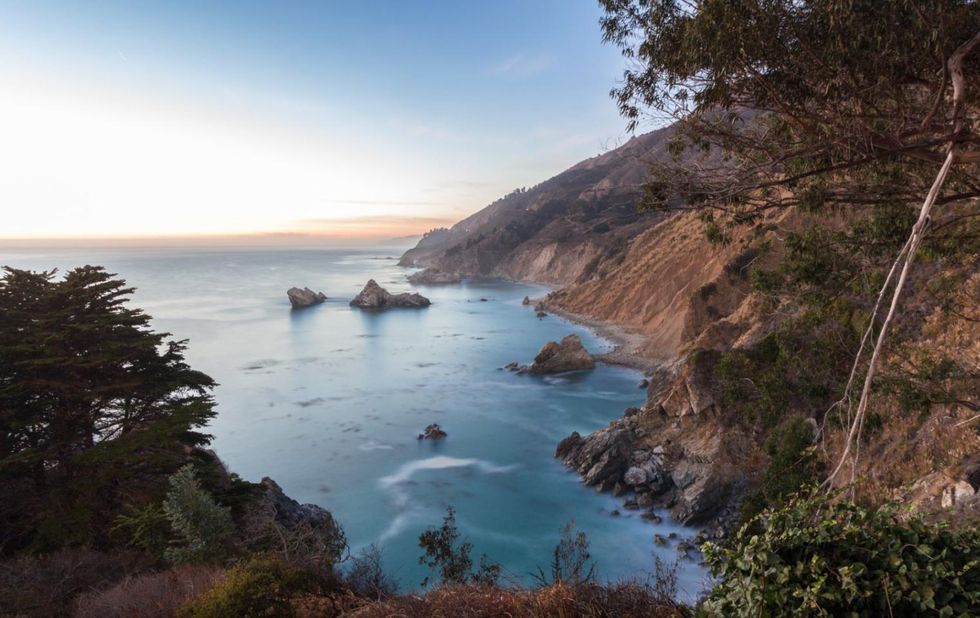
Julia Pfeiffer Burns State Park
Of Big Sur's iconic coastal landscapes, the one that is likely to be pictured in most people's minds is the stretch of coast comprising Julia Pfeiffer Burns State Park. This dramatic section of central Big Sur is one of the most picturesque settings in California.The park is best known for its centerpiece attraction: McWay Falls gracefully plunges onto the sands of McWay Cove some 80 feet below. Read more.
- PROS: Oceanside waterfall. Big coastal vistas. Cove and moutainside hikes.
- CONS: Limited beach access.
- REGION: Big Sur Coastline, CA
- CONGESTION: High
- PREFERABLE SEASON(S): Winter, Spring, Summer, Fall
- DAY-USE/PARKING PASS REQUIRED: State Park Fee ($10.00)
- DOGS ALLOWED: No
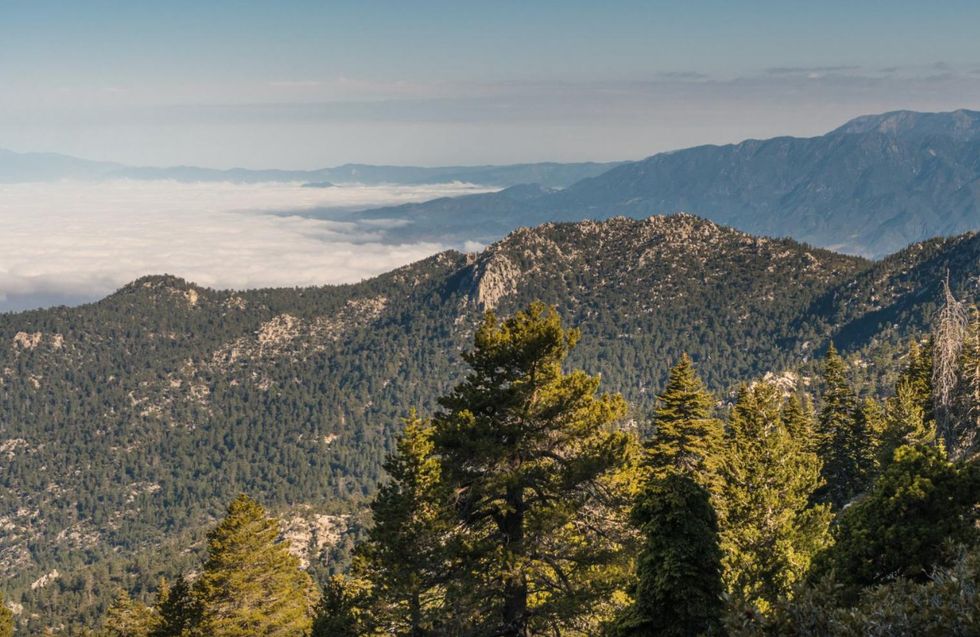
Mount San Jacinto via Marion Mountain Trail
Mount San Jacinto is the highest peak in San Jacinto Mountains and the second highest point in Southern California. This summit receives a lot of visitors everyday, facilitated in part by the tram that runs up from Palm Springs to 8,500 feet. The Marion Mountain Trail stays on the southwest aspect of Mount San Jacinto, and apart from the Skyline Trail hike, it is one of the most challenging routes to the San Jacinto summit. Read more.
- PROS: Old-growth forest. Wild forest. Expansive views. Solitude.
- CONS: Limited parking.
- REGION: Western Sonoran + Colorado Desert, CA
- CONGESTION: Low
- PREFERABLE SEASON(S): Spring, Summer, Fall
- DAY-USE/PARKING PASS REQUIRED: Not Required
- TOTAL DISTANCE: 12.00 mi (19.31 km)
- DOGS ALLOWED: No



